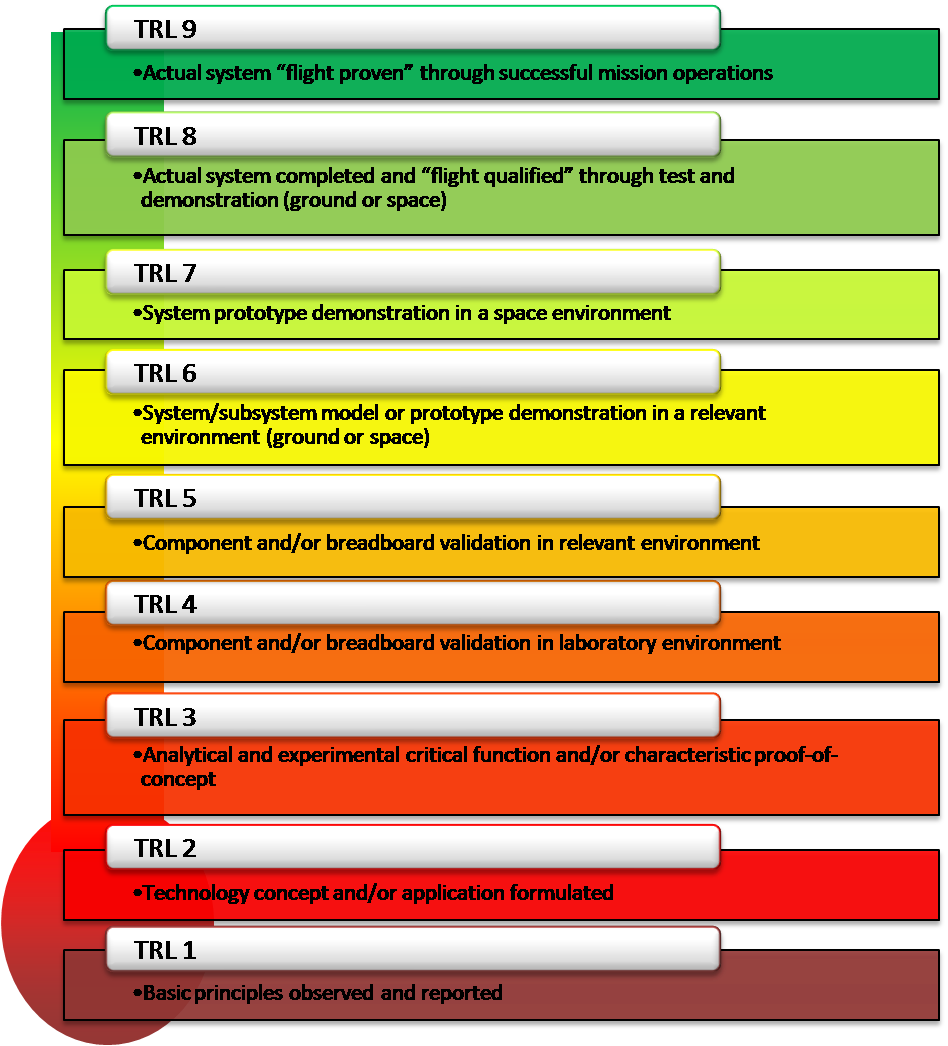Technology Readiness Level (TRL) is a widely used metric to measure the maturity of a technology. It provides a framework for evaluating the progress of a technology from its initial concept to commercialization. This system is particularly valuable for understanding the stage of development of new technologies, especially in fields like aerospace, defense, and research and development.
The TRL Scale
The TRL scale ranges from 1 to 9, with each level representing a distinct stage of development:
- TRL 1: Basic Research: The concept is identified, but there is no experimental proof of concept.
- TRL 2: Applied Research: The concept has been proven through laboratory-based experiments.
- TRL 3: Experimental Proof of Concept: The technology has been demonstrated in a relevant environment.
- TRL 4: Technology Validation: The technology has been validated in a relevant environment.
- TRL 5: Technology Demonstration: The technology has been demonstrated in an operational environment.
- TRL 6: System/Subsystem Integration: The technology has been integrated into a system or subsystem.
- TRL 7: System/Subsystem Demonstration: The technology has been demonstrated in an operational environment.
- TRL 8: Engineering and Manufacturing Demonstration: The technology has been demonstrated in an operational environment.
- TRL 9: Proven in Operation: The technology has been proven in operational use.
Applications of TRL
TRL is used in various contexts, including:
- Research and development: To assess the progress of research projects and allocate resources effectively.
- Technology transfer: To evaluate the readiness of a technology for commercialization.
- Government funding: To determine the eligibility of projects for funding.
- Investment decisions: To assess the risk and potential return of technology-based investments.
Benefits of Using TRL
Using TRL offers several benefits:
- Clear communication: TRL provides a common language for discussing technology development.
- Risk management: By understanding the TRL of a technology, stakeholders can assess and manage risks.
- Decision-making: TRL can help inform decisions about funding, resource allocation, and partnerships.
- Progress tracking: TRL provides a framework for tracking the progress of technology development.
In conclusion, Technology Readiness Level is a valuable tool for understanding the maturity of technologies. By using TRL, organizations can make informed decisions, manage risks, and accelerate innovation.







